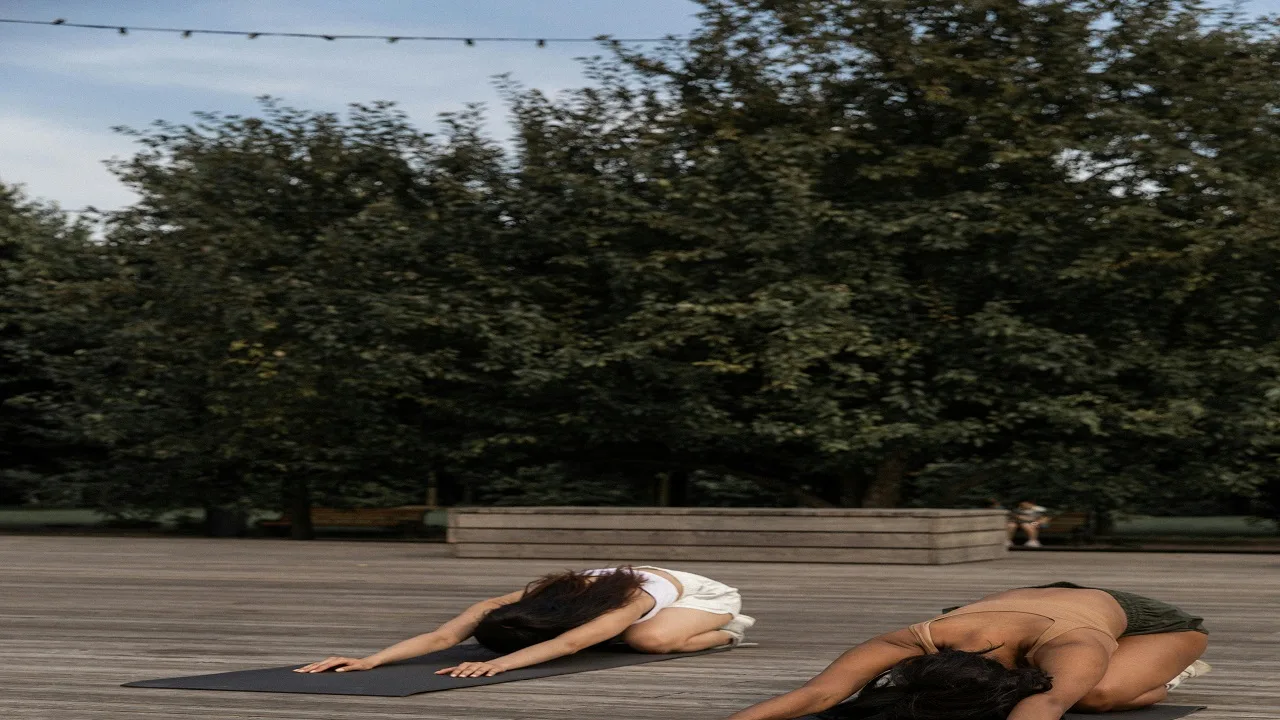One of the easiest and most peaceful yoga poses, Child’s Pose (Balasana) relaxes the body and mind. This posture may assist beginners and advanced yogis in decreasing anxiety, relaxing the nervous system, and alleviating physical strain. Child’s Pose is a basic, relaxing pose that helps practitioners reconnect with their breath and relax. This post will discuss how Child’s Pose may help you relax, decrease worry, and feel grounded.
The Calming Power of Child’s Pose
Child’s Pose is meant to induce profound relaxation and retreat. Folding forward with the head on the floor helps the body relax and meditate. This position gives yoga practitioners a chance to calm down and relieve stress.
Child’s Pose calms the mind by activating the parasympathetic nervous system. This neural system portion induces the “rest and digest” mode to reduce stress and anxiety. This method reduces the heart rate, deepens the breath, and relaxes the body.
Moreover, the forehead’s moderate contact with the floor activates the vagus nerve, which controls stress. Simple activity promotes calm and balance from awareness. Thus, Child’s Pose relieves tension and anxiety immediately, making it a valuable tool for mental and physical health.
Grounding and Reducing Anxiety
Because it grounds you, Child’s Pose reduces anxiety. Child’s Pose helps practitioners stay present and reduce anxiety caused by rushing thoughts or worrying about the future. The forward-folding position provides protection and safety, which is reassuring amid emotional turmoil.
The position quiets mental clutter and focuses inward by focusing on the breath. In mindfulness, the practitioner may let go of stressful ideas and focus on bodily sensations. Child’s Pose—kneeling with the forehead on the ground and arms lying in front or by the sides—creates a natural cocoon of protection and support.
In addition to mental advantages, the stance relieves physical stress from worry. Child’s Pose comfortably extends the lower back, shoulders, and neck, relieving stress. Stretching the hips, thighs, and ankles achieves full-body relaxation.
Variations for Enhanced Comfort
Child’s Pose is pleasant for most individuals, but various variants may improve the experience and accommodate those with special needs. A typical wide-legged version allows the body to bend forward, relieving lower back and hip strain and making the posture easier for tighter people.
Use bolsters, blankets, or blocks for comfort. A bolster or cushion beneath the chest or forehead might help the body relax more. A folded blanket beneath the knees or between the thighs and calves may ease leg pain, and a block under the forehead brings the ground closer if the head doesn’t reach the floor.
These adjustments make Child’s Pose suitable for everyone, allowing them to enjoy its relaxing and grounding advantages.
